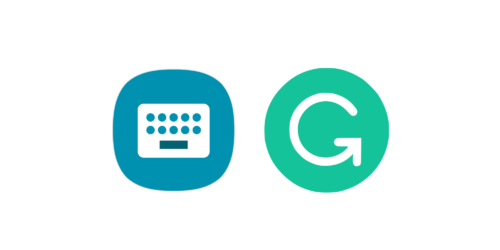
An Early Story of Managing AI Use in a Writing Course
By Lauren Spring, Ada Sharpe, & Elan Paulson
As teachers, we have faced some early challenges with generative AI use by students in a writing-based diploma-level course this semester. We think that we did some things right to discourage non-permissible AI use for assignments, but a few unexpected and challenging situations still arose.
So, here we consider what we would do next semester when teaching this course again. Hopefully, some of these ideas could be modified and applied as you manage students’ AI use in your course!
What we did right
For this writing-focused course, AI use was strongly discouraged for assignments. We tried to anticipate what AI-related issues might arise, such as clarifying our expectations for AI use, encouraging students to care about the assignment, and considering that students may be more likely to turn to AI if they start the assignment at the last minute.
Clear AI expectations
We provided an AI statement of use and introduced it at the beginning of the semester. This made clear our expectations at the beginning of the semester. It also provided documentation we referred to later in the semester before the assignment due dates and in assignment feedback if needed.
Purposeful assignment design
We designed assignments that encouraged personal responses based on lived experiences. We included assignments that did not emphasize writing skills but creativity and self-expression experimentation. The goal was to make these assignments relevant to students’ lives, hoping they would be less likely to turn to AI.
The instructions and rubric asked students to include plain language, writing strategies from the course content, and references. Assignments also asked students to refer specifically to course materials in the prompts (e.g. in the podcast we listened to in class on the subject, how were these concepts defined? How did you apply this to your own writing?). We also provided templates for each assignment to further clarify expectations for students.
In-class modeling
Because this is a course about autobiography and memoir, and we had asked students to share authentic aspects of their life stories in their assignments, it felt “right” that we did the same. Also, we thought sharing about ourselves could allow students to get to know us better too. So, for each assignment, we teachers drafted our own version, using the template provided, to share with students as a model.
In-class work time
We made time in class for students to start their assignments. This provided time for students (so they did not feel rushed) as well as oversight (an opportunity to clarify instructions and “course correct” at an early stage) and insight for us (to get some early information about the students’ topics, approach, etc.)
Tailored feedback
We provided extensive formative feedback on early low-stakes assignments to guide students’ work and adjust their approach in subsequent submissions. We discouraged overly formal, verbose writing in submissions and emphasized and modelled the use of plain language. We justified the importance of writing plainly and about the self (the writing “I”) as core aspects of self-expression in contemporary Western culture.
What we’ll do (differently) next time
There still may have been some non-permissible AI use, which was difficult and time-consuming to verify. Here are some ideas we might try next time.
A “duplication” rider
Despite how our assignments encouraged personalization, we saw multiple submissions that seemed extremely similar in topic, themes, and language. Next time, we will put a rider on “original” writing assignments that indicate that if we see multiple responses from students that are very similar, we reserve the right to ask students to rewrite the assignment.
Duplication Rider: To uphold academic integrity and encourage individual creativity, we require all assignments to be original and personalized. While similarities due to discussions among students are understandable, extreme similarities suggesting duplication are unacceptable. In the case of multiple individual submissions that are very similar, I reserve the right to investigate the potential of collusion/unauthorized sharing and/or require the involved students to rewrite the assignment on a new topic provided and approved by the instructor. By submitting your assignment, you acknowledge and agree to these terms. Please approach the assignment from your unique perspective, using your own words and personal experiences to avoid duplication.
Requiring pre-writing
Integrating some form of pre-writing (such as brainstorming or a mind map) into the assignment as a required component could verify that students had spent time doing some human critical thinking. It also provides documentation to verify consistency in the assignment development process. It will be important to include this pre-writing requirement in the instructions and in the rubric evaluation.
Use of verification
Our students were invited to write about a meaningful object in their lives, but we noticed that some writing seemed highly unlikely to convey an actual situation that our students would have had. Here is a simulated example resembling (but not reproducing) the submitted work.
The mirror I inherited from my grandmother was priceless. It was a dazzling oval of glass and ebony, adorned with floral and avian motifs. I drove it home as a pilgrimage and tribute, and over the weeks I met strangers, saw wonders, had unforgettable adventures. Throughout, the mirror was my companion, my confidant, and my connection to a legacy of generations.
In the future, we might ask them to submit a picture of something they care about (with them in it!) earlier in the semester, then ask them to write about it later in the semester.
Or, perhaps we include some real-time element to the assignment, such as having students select one part of their submission and share why it’s their favourite in class. Afterward, other students and the professor could probe more deeply (e.g. “You say it was ‘exhilarating’ when you were bidding on that abstract painting at the auction house in NYC. What about the painting do you love the most? What other words other than ‘exhilarating’ did you consider choosing when writing tis passage?”). Alternatively, students could video record themselves with these answers, spoken in their own words.
Another option might be to write an original story based on an interview with someone else, which provides a transcript for verification.
Incorporating AI
Rather than try to minimize the use of AI, we might introduce in class how to prompt effectively for AI outputs that would better reflect their own voice and experiences. We could also introduce AI use as a process or a conversation, in which the AI serves as a coach or editor, and the transcript is submitted along with the final writing product.






